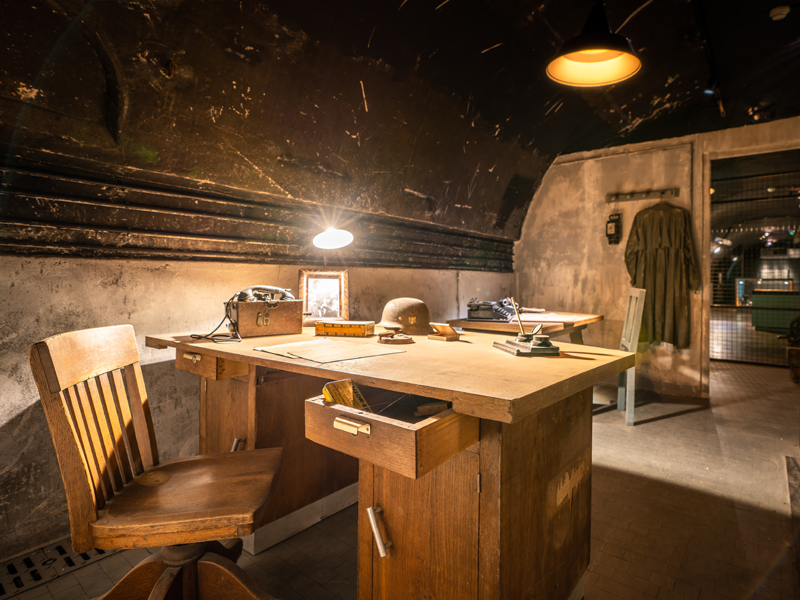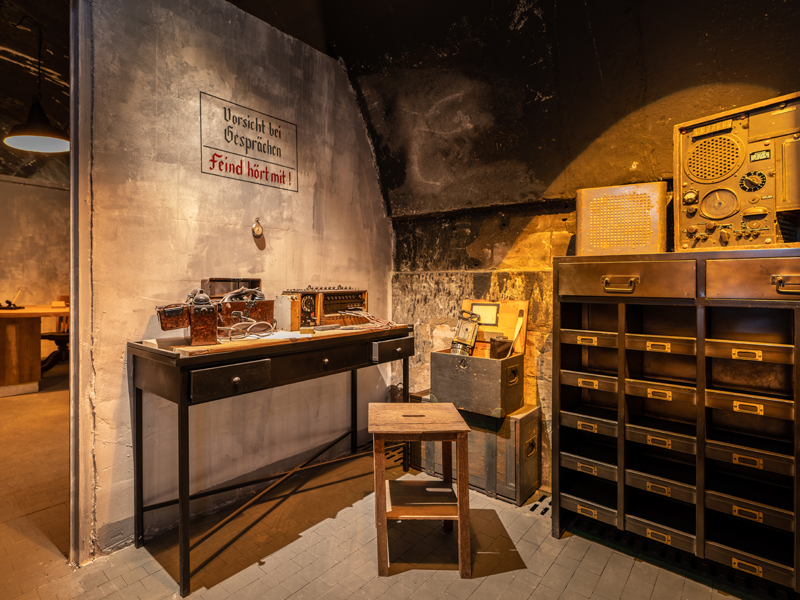
In 1943, General Richter, commanding the 716th German Infantry Division, stationed in Normandy to defend the coast, decided to provide his unit with an underground command post to supervise the operations in the event of an invasion.
The site chosen was a former stone quarry located northwest of Caen. Workers of Organization Todt dug a 70-meter long and 3-meter high tunnel in the limestone. With its coalface back to the sea and the thickness of the rock, the structure was well protected from bombardments. The construction was completed late 1943.
The bunker contained a radio transmission center and was equipped with a ventilation system, generator and water cistern. A team of secretaries, telephonists, cartographers and officers worked constantly beneath this thick limestone shell. A small garrison was in charge of defending the structure. Each of the three entrances on alternate sides was defended by a machine gun. Double-leaf armoured doors completed the defence system.

In the night of 5 to 6 June 1944, the general staff of the 716th ID was informed of unusual aerial activity and parachute drops to the east of the Orne and west of the Dives.
In the small hours of the morning, the HQ staff received a stream of information from the CPs along the coast. This information had to be collected and analysed before reporting to the higher echelons. The long-awaited D-Day landings had finally taken place. This position was at the centre of the operations.
Richter reported the situation to General Marcks, commander of the 84th army corps headquartered in Saint-Lô. The following night, the general officers met to devise a strategy aimed at driving the Allied troops back to the sea, but the tank counter-attacks were repelled and the front line remained in the same place for several weeks. During the battle, the underground galleries were used as a CP and shelter for the troops. During the main offensives, they were turned into a makeshift hospital. The CP was finally abandoned on 23 June. Canadian soldiers took possession of the premises on 9 July.